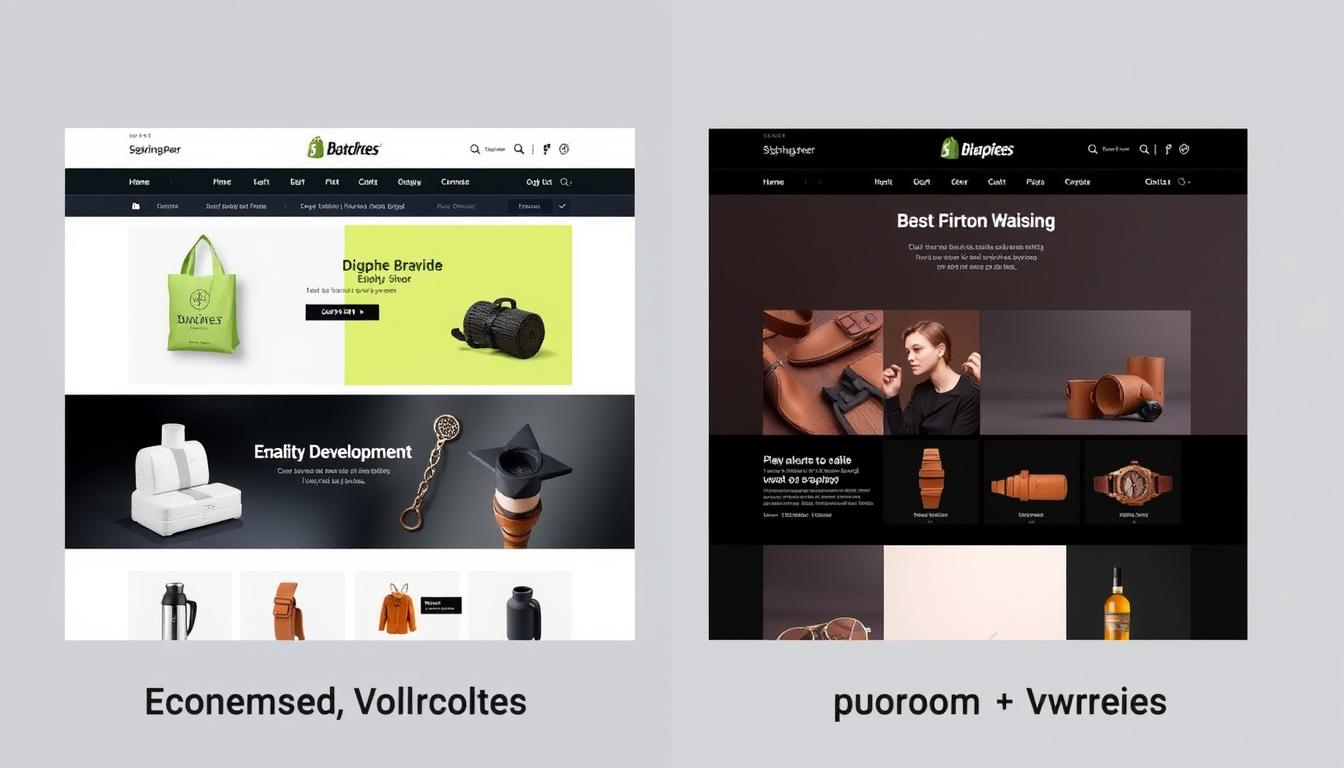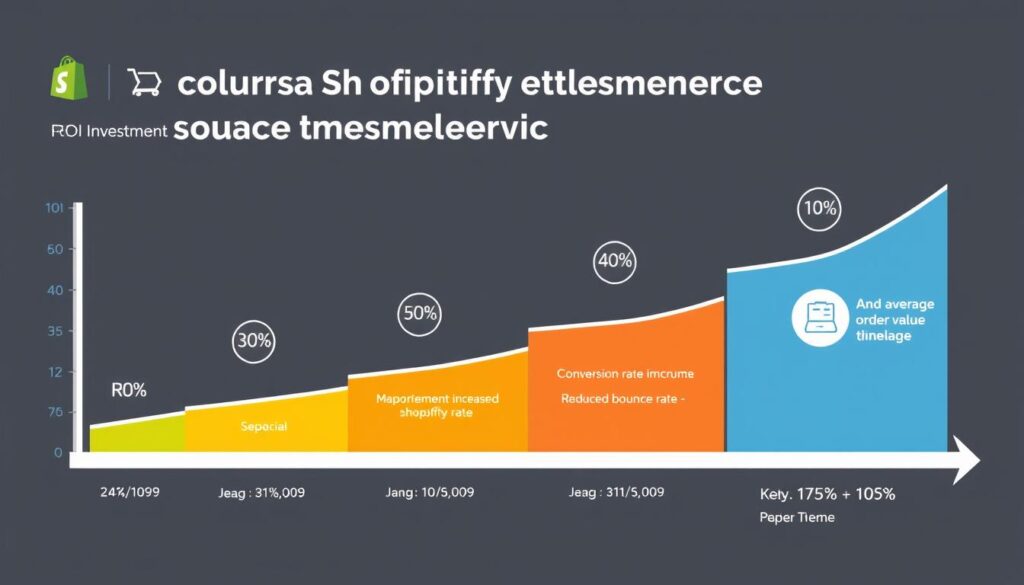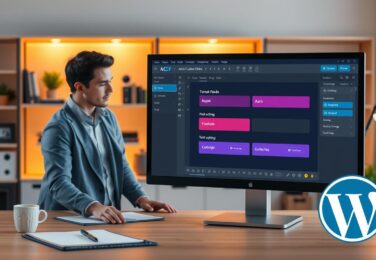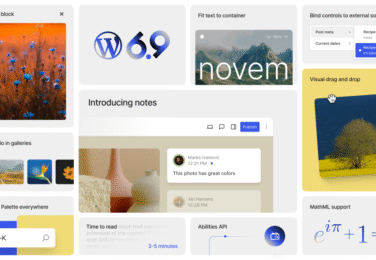The Ultimate Guide to Shopify Custom Theme Development: Best Practices & Benefits

Table of Content
This comprehensive guide will walk you through everything you need to know about developing custom Shopify themes—from planning and design to coding and implementation. Whether you’re a developer looking to expand your skills or a store owner seeking to understand the custom development process, you’ll discover actionable insights to elevate your Shopify store above the competition.
Why Custom Themes Outperform Pre-built Templates
While Shopify’s theme marketplace offers hundreds of options, custom themes provide distinct advantages that can significantly impact your business performance. Let’s explore why investing in custom Shopify theme development might be the right choice for your store.
Benefits of Custom Themes
- Unique brand identity that stands out from competitors
- Tailored user experience designed around your specific customer journey
- Custom functionality that addresses your exact business needs
- Improved conversion rates through optimised checkout flows
- Enhanced performance with lean code (no bloated features)
- Complete control over future updates and modifications
- SEO advantages through customised metadata and schema markup
Limitations of Pre-built Themes
- Generic appearance shared with thousands of other stores
- Limited customisation options within the theme’s framework
- Unnecessary features that can slow down performance
- Restricted ability to implement unique functionality
- Potential compatibility issues with specialised apps
- Dependency on theme developers for major updates
- One-size-fits-all approach that may not suit your niche
Comparing Your Options
| Feature | Free Themes | Premium Themes | Custom Development |
| Initial Cost | $0 | $180-$350 | $3,000-$20,000+ |
| Uniqueness | Low (widely used) | Medium | High (one-of-a-kind) |
| Customisation Level | Basic | Moderate | Unlimited |
| Development Time | Hours | Days | Weeks/Months |
| Technical Support | Limited | 6-12 months | Ongoing (with maintenance) |
| Performance Optimisation | Generic | Good | Tailored to your needs |
| Scalability | Limited | Moderate | High |
Not Sure Which Option Is Right For You?
Download our free decision guide to help determine if custom theme development aligns with your business goals and budget.
The Shopify Theme Development Process
Creating a custom Shopify theme involves several distinct phases, each critical to delivering a successful final product. Understanding this process helps set realistic expectations and ensures all stakeholders are aligned throughout development.

The complete Shopify custom theme development lifecycle
1. Planning and Discovery
The foundation of any successful custom theme begins with thorough planning. This phase involves understanding your business requirements, analysing your target audience, and establishing clear objectives for your online store.
Key Planning Activities:
- Competitor analysis and market research
- User persona development
- Customer journey mapping
- Feature prioritisation
- Technical requirements documentation
Planning Deliverables:
- Project scope document
- Functional specifications
- Technical requirements
- Project timeline
- Budget allocation
During this phase, it’s crucial to identify which Shopify features are most important for your business and how they should be implemented in your custom theme. This might include specialised product displays, custom filtering options, or unique checkout experiences.
2. Design Phase
Once planning is complete, the design phase transforms your requirements into visual concepts. This stage focuses on creating a cohesive visual language that reflects your brand while optimising for user experience.

Progression from wireframes to final design mockups
Design Process Steps:
- Wireframing key page templates
- Creating visual design concepts
- Developing UI component library
- Designing responsive layouts
- Finalising design system
Design Deliverables:
- Wireframes for all page types
- High-fidelity mockups
- Interactive prototypes
- Style guide and design system
- Asset library
Modern Shopify theme design must account for various device sizes and user contexts. Your design should be mobile-first, ensuring a seamless experience across smartphones, tablets, and desktops.
3. Development Phase
With approved designs in hand, development begins. This is where your Shopify custom theme takes shape through coding and implementation of the planned features and design elements.
Understanding Shopify Theme Architecture
Before diving into development, it’s essential to understand how Shopify themes are structured. Shopify themes use a templating language called Liquid, along with HTML, CSS, and JavaScript.
Shopify themes follow a specific directory structure that includes:
- Layout: Contains theme.liquid, the master template
- Templates: Page-specific templates (product, collection, etc.)
- Sections: Modular, customisable content blocks
- Snippets: Reusable code fragments
- Assets: CSS, JavaScript, and media files
- Config: Theme settings and configuration
- Locales: Translation and internationalisation files
Development Environment Setup
Setting up a proper development environment is crucial for efficient Shopify theme development. This typically involves:
- Installing Shopify CLI for local development
- Setting up version control with Git
- Configuring a workflow for theme deployment
- Implementing a build process for asset optimisation
Key Development Tasks
The development phase includes several critical tasks:
Theme Structure
Building the core architecture based on Shopify’s Online Store 2.0 framework
Template Creation
Developing templates for each page type (home, product, collection, etc.)
Section Development
Creating modular, customisable sections for flexible page building
Custom Functionality
Implementing specialised features unique to your business needs
Integration
Connecting with necessary apps and third-party services
Optimisation
Ensuring performance, accessibility, and SEO best practices
Custom Liquid Templates
Liquid is the backbone of Shopify theme development. Here’s an example of a custom product template that includes dynamic filtering:
{% comment %}
Custom product template with dynamic filtering
{% endcomment %}
{% section 'product-template' %}
{% if collection %}
<div class="dynamic-filters">
{% for filter in collection.filters %}
<div class="filter-group">
<h4>{{ filter.label }}</h4>
<ul>
{% for value in filter.values %}
<li>
<a href="{{ value.url }}" {% if value.active %}class="active"{% endif %}>
{{ value.label }} ({{ value.count }})
</a>
</li>
{% endfor %}
</ul>
</div>
{% endfor %}
</div>
{% endif %}
{% section 'product-recommendations' %}AJAX Cart Implementation
A smooth cart experience is essential for conversion. Here’s a simplified example of an AJAX cart implementation:
// AJAX Cart JavaScript
const ajaxCart = {
init: function() {
this.setupEventListeners();
this.updateCartCount();
},
setupEventListeners: function() {
const addToCartForms = document.querySelectorAll('form[action="/cart/add"]');
addToCartForms.forEach(form => {
form.addEventListener('submit', this.handleAddToCart.bind(this));
});
},
handleAddToCart: function(event) {
event.preventDefault();
const form = event.target;
const formData = new FormData(form);
fetch('/cart/add.js', {
method: 'POST',
body: formData
})
.then(response => response.json())
.then(data => {
this.updateCartCount();
this.showCartNotification(data);
})
.catch(error => console.error('Error:', error));
},
updateCartCount: function() {
fetch('/cart.js')
.then(response => response.json())
.then(cart => {
const cartCountElements = document.querySelectorAll('.cart-count');
cartCountElements.forEach(element => {
element.textContent = cart.item_count;
});
});
},
showCartNotification: function(product) {
// Display notification that product was added
}
};
document.addEventListener('DOMContentLoaded', function() {
ajaxCart.init();
});Custom Section Schema
Shopify’s sections allow for merchant customisation. Here’s an example of a custom hero section with configurable options:
{% schema %}
{
"name": "Hero Banner",
"settings": [
{
"type": "image_picker",
"id": "background_image",
"label": "Background Image"
},
{
"type": "text",
"id": "heading",
"label": "Heading",
"default": "Welcome to our store"
},
{
"type": "richtext",
"id": "subheading",
"label": "Subheading",
"default": "Discover our latest products
"
},
{
"type": "text",
"id": "button_label",
"label": "Button Label",
"default": "Shop Now"
},
{
"type": "url",
"id": "button_link",
"label": "Button Link"
},
{
"type": "select",
"id": "text_alignment",
"label": "Text Alignment",
"options": [
{
"value": "left",
"label": "Left"
},
{
"value": "center",
"label": "Center"
},
{
"value": "right",
"label": "Right"
}
],
"default": "center"
}
],
"presets": [
{
"name": "Hero Banner",
"category": "Image"
}
]
}
{% endschema %}Need Help With Shopify Theme Development?
Our team of certified Shopify experts can build a custom theme that perfectly matches your brand and business requirements.
4. Testing Phase
Thorough testing is essential to ensure your custom Shopify theme functions flawlessly across all devices, browsers, and user scenarios.
Testing Categories:
- Functionality testing
- Responsive design testing
- Cross-browser compatibility
- Performance optimisation
- Accessibility compliance
- User acceptance testing
Testing Tools:
- Google Lighthouse for performance
- BrowserStack for cross-browser testing
- WAVE for accessibility evaluation
- Theme Check for Shopify-specific issues
- User testing platforms
5. Deployment and Launch
The final phase involves deploying your custom theme to your live Shopify store and ensuring a smooth transition for your customers.
Pre-Launch Checklist:
- Final QA review
- SEO verification
- Analytics implementation
- Backup of existing theme
- Content migration
- Performance benchmarking
After launch, it’s important to monitor your store’s performance and gather user feedback to identify any issues or opportunities for improvement.
7 Technical Best Practices for Shopify Theme Development
Following these best practices will ensure your custom Shopify theme is robust, maintainable, and performs optimally for your customers.

1. Performance Optimisation
Speed is critical for conversion rates and SEO. Optimise your theme by:
- Minimising HTTP requests
- Compressing and lazy-loading images
- Minifying CSS and JavaScript
- Implementing critical CSS
- Using efficient Liquid code patterns
2. Mobile-First Design
With most shoppers using mobile devices, prioritise mobile experience by:
- Designing for small screens first
- Optimising touch targets
- Simplifying navigation for mobile users
- Testing on actual devices
- Considering thumb zones in UI design
3. Modular Architecture
Create maintainable code through modular design:
- Using Shopify sections for content blocks
- Creating reusable snippets
- Implementing BEM methodology for CSS
- Organising JavaScript into modules
- Leveraging theme settings for customisation
4. Accessibility Compliance
Ensure your theme is usable by everyone:
- Following WCAG 2.1 guidelines
- Using semantic HTML
- Providing sufficient color contrast
- Adding ARIA attributes where needed
- Ensuring keyboard navigation
5. SEO Optimisation
Build SEO into your theme structure:
- Implementing proper heading hierarchy
- Using structured data markup
- Creating SEO-friendly URLs
- Optimising meta tags
- Ensuring clean, crawlable HTML
6. Version Control
Maintain code quality and collaboration:
- Using Git for version control
- Implementing a branching strategy
- Writing descriptive commit messages
- Conducting code reviews
- Documenting changes and features
7. Future-Proofing
Prepare your theme for longevity:
- Following Shopify’s latest standards
- Using Online Store 2.0 features
- Documenting code thoroughly
- Planning for scalability
- Creating update pathways
Pro Tip: Leverage Shopify’s Theme Check tool to automatically detect common issues and ensure your custom theme follows Shopify’s best practices and standards.
Common Challenges and Solutions in Shopify Theme Development
Even experienced developers encounter challenges when creating custom Shopify themes. Here are some common issues and their solutions:
Browser Compatibility
Challenge:
Ensuring consistent appearance and functionality across different browsers and versions.
Solution:
- Use autoprefixer for CSS vendor prefixes
- Implement feature detection with Modernizr
- Test on multiple browsers using BrowserStack
- Create graceful fallbacks for unsupported features
- Use polyfills for newer JavaScript features
Theme Updates
Challenge:
Maintaining custom themes when Shopify releases platform updates or new features.
Solution:
- Follow Shopify’s developer changelog
- Use version control to track changes
- Implement modular code for easier updates
- Test updates in a development store first
- Document customisations thoroughly
Performance Bottlenecks
Challenge:
Identifying and resolving performance issues that slow down page loading.
Solution:
- Use Lighthouse to identify specific issues
- Optimise image delivery with responsive images
- Implement lazy loading for below-the-fold content
- Minimise Liquid rendering time
- Reduce third-party script impact
App Compatibility
Challenge:
Ensuring third-party Shopify apps work correctly with your custom theme.
Solution:
- Review app requirements before development
- Implement app blocks for Online Store 2.0
- Create dedicated spaces for app content
- Test with common apps during development
- Document app integration points
Facing Challenges With Your Shopify Theme?
Our team can help troubleshoot issues and optimise your existing theme or develop a new custom solution.
Case Study: Custom Theme Success Story

Boutique Clothing Retailer Increases Conversions by 42%
Client Challenge:
A boutique clothing retailer was struggling with a generic premium theme that couldn’t showcase their unique products effectively. Their conversion rate was stagnant at 1.8%, and customers frequently abandoned carts during the checkout process.
Key Issues:
- Generic product pages that didn’t highlight unique features
- Limited filtering options for their extensive catalog
- Poor mobile experience with high bounce rates
- Slow page load times affecting SEO and user experience
- Inability to create custom collection displays
Custom Theme Solution:
We developed a custom Shopify theme that addressed their specific needs:
- Custom product templates with fabric swatches and size guides
- Advanced filtering system with multiple attributes
- Mobile-first design with simplified checkout
- Performance optimisation reducing load times by 65%
- Custom collection pages with curated looks
- Integrated Instagram feed showing products in real-life contexts
Measurable Results:
“The custom theme transformed our online presence. Not only does our store now perfectly reflect our brand, but the improved user experience has dramatically increased our sales. The investment in custom development paid for itself within three months.”
Cost vs. ROI Analysis for Custom Shopify Theme Development
Understanding the financial implications of custom theme development is crucial for making an informed decision. While the upfront investment is higher than using pre-built themes, the long-term returns can be substantial.

[Infographic: Custom Theme ROI Timeline]
Investment Breakdown
| Expense Category | Typical Range | Factors Affecting Cost |
| Discovery & Planning | $1,000-$3,000 | Complexity of requirements, market research depth |
| Design | $2,000-$8,000 | Number of unique templates, design complexity |
| Development | $5,000-$15,000 | Custom functionality, integration requirements |
| Testing & QA | $1,000-$3,000 | Scope of testing, number of devices/browsers |
| Deployment & Training | $500-$2,000 | Content migration needs, staff training requirements |
| Ongoing Maintenance | $200-$1,000/month | Update frequency, support level needed |
Expected Returns
Quantitative Benefits:
- Conversion rate improvements (typically 15-40%)
- Increased average order value (10-25%)
- Higher customer retention rates
- Reduced bounce rates
- Improved search engine rankings
- Lower cart abandonment
Qualitative Benefits:
- Enhanced brand perception
- Improved customer satisfaction
- Better alignment with marketing campaigns
- Competitive differentiation
- Future-proofed platform
- Greater control over user experience
Typical ROI Timeline
Based on our experience with numerous custom Shopify theme projects, here’s a typical ROI timeline:
- Months 1-3: Implementation phase with negative ROI during development
- Months 4-6: Initial performance improvements begin offsetting costs
- Months 7-12: Break-even point typically achieved
- Year 2+: Continued positive returns with minimal maintenance costs
ROI Calculation Example: For an e-commerce store with $500,000 annual revenue and a 2% conversion rate, a custom theme that improves conversions by 30% (to 2.6%) would generate an additional $150,000 in annual revenue. With a $20,000 investment in custom theme development, the ROI would be 650% after just one year.
Want to Calculate Your Potential ROI?
Our team can analyse your current store performance and provide a detailed ROI projection for custom theme development.
Conclusion: Is Custom Shopify Theme Development Right for You?
Custom Shopify theme development represents a significant investment in your e-commerce business, but one that can deliver substantial returns when executed properly. By creating a unique shopping experience tailored to your brand and customer needs, you can differentiate your store from competitors and optimise for conversions at every step of the customer journey.
The decision to invest in custom theme development should be based on your specific business goals, budget, and timeline. For established stores with steady revenue, the ROI typically justifies the investment. For new stores with limited budgets, starting with a premium theme and planning for custom development as you grow may be more practical.
Regardless of your current situation, understanding the process, best practices, and potential challenges of Shopify custom theme development will help you make informed decisions about your e-commerce platform’s future.
Ready to Explore Custom Shopify Theme Development?
Contact our team of certified Shopify experts for a personalised consultation and discover how a custom theme can transform your online store.










